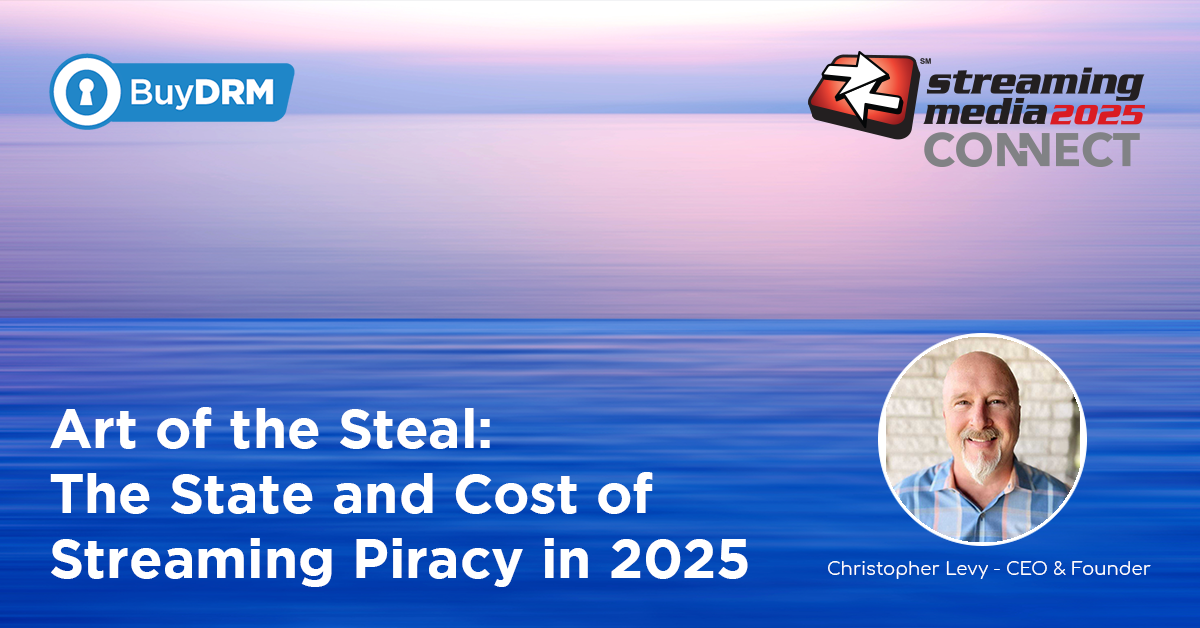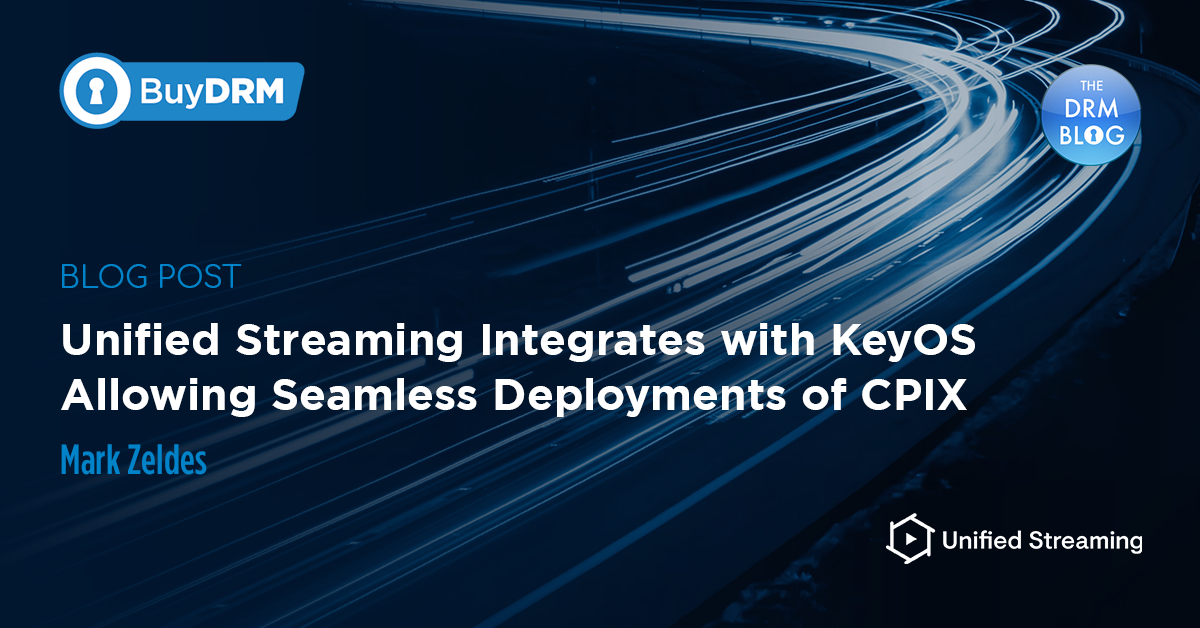Live sports streaming is a rapidly growing industry that will continue to grow as the world continues to become more digitally connected and as people migrate from cable TV packages or expensive satellite TV subscriptions.
It also presents a huge opportunity for broadcasters, leagues, teams, players, and fans alike and plays a major role in bringing together communities and nations.
However, piracy in live sports streaming has become a major issue for both fans and organizations. It's not uncommon for these pirated streams to be uploaded onto YouTube, Facebook, or other social media platforms as well, which is leading to decreased viewership on traditional channels.
This blog post from BuyDRM will explore the effects of piracy in live sports streaming as well as offer solutions for content providers to combat this problem.
The Mechanics of Live Sports Streaming
Before we dive into the aspects of piracy, let’s first understand how Live Sports Streaming works?
The answer is complicated but worth understanding if you're a sports fan.
The process starts with the broadcasting company acquiring the rights to show an event to their audience. They will then use professional cameras and sound equipment to capture the action on-site.
This raw footage is then sent back to a production facility where it's edited for broadcast and optionally graphics are inserted into live scoreboards.
Finally, this finished product is then transcoded, packaged in one of many different streaming protocols (such as HLS or MPEG-DASH) with ad insertion markers for CSAI or ads stitched into the video for SSAI, encrypted using DRM before being pushed out over the internet, cable networks, or sent for distribution across the world via geostationary satellites.
That’s a lot, isn’t it?
Let’s pause and ask ourselves a simple question. How long should this process take? How long a delay from glass to glass (camera to screen) is acceptable?
One hour? 10 minutes? 1 minute?
Well, just think about it! You have a player scoring the game-winning touchdown during the Super Bowl, you hear about it from your friends on Twitter, the news channels are buzzing about it … and your screen is still showing video from the start of the fourth quarter! Wouldn’t that be the worst experience ever?
For practical and some monetary (sports betting) reasons, it's imperative that live video reaches your screen within 30 seconds to a minute from being captured in the stadium.
That implies that a ton of technology is at work to make this almost-real time transmission possible. To recap, here is what a typical live sports streaming pipeline looks like -
- Transmission from the Cameras to the Broadcasting Facility
- Transcoding on-prem or in the cloud
- Ad Markers or Ad Insertion
- Packaging for delivery
- DRM and Watermarking
- CDN-based delivery
- Playback on a variety of devices
Monetizing and Piracy in Sports Broadcasting
Broadcasting rights and subscriptions are sold to the highest bidder, making it difficult for smaller companies to compete in this space. Major players like Facebook and Amazon have entered the space as they look forward to dominating the market. But what about all those niche players trying their hand at live sports broadcasting?
In general, monetizing live sports streams content is usually restricted to one of the following - advertising (AVOD); subscriptions (SVOD); or pay-per-view events (TVOD). Each of these monetization methods have their own advantages and disadvantages, but one thing that is common to all of them is that illegal streaming of their content and piracy can severely hurt their revenues.
So, how do small, niche streaming companies monetize and protect their content?
Piracy in Sports Streaming
The piracy of live sports broadcasts is a growing concern for the broadcast industry. For example, during the 2020 Super Bowl, over 2,650 pirate Super Bowl streams were detected, which were watched by more than 12 million people. The vast majority of the streams were found on Facebook (70.6%), followed by YouTube (20.8%), Periscope (4.8%), Twitch (3.2%) and VK (0.6%) [source].
The use of these pirated sites not only deprives organizations of revenue from advertising and subscription fees but also decreases their viewership as they have lost control on when and where their content is viewed.
Streams are often stolen when a video is decrypted on a low-security device (L3 Widevine), or via screen capture technologies. If someone steals a stream and restreams it on their platform/website, it results in
- Lost revenue from selling TVOD or SVOD subscriptions and seats.
- Increased infrastructure usage (e.g., CDN bills) without any compensatory revenue either from subscriptions or advertising.
So, how do you combat Piracy?
To prevent piracy of your intellectual property, you can use DRM. There are many ways to use DRM, from digital watermarks to encryption and decryption.
- Using a multi-DRM strategy to protect your streams on all platforms with strict licensing rules. A good DRM vendor will allow you to do all of the following to protect your streams -
- Prevent screen capture.
- Prevent downloading of the streams by using the strictest variants of the DRM available.
- Ensure a strict expiration date in the license beyond which the stream will be inaccessible.
- Provide the option to rotate the DRM keys during the live streams to frustrate hackers.
- Implement geo-blocking to ensure that the live telecast can be watched only in those regions where it is meant to be.
- Using Forensic Watermarking to identify who stole the content using a digital fingerprint of the streaming session.
Hesitancy in deploying DRM at scale.
It is no secret that some companies consider DRM an inconvenience that they don't want to deal with. This hesitancy stems out of the perception that,
- DRM is expensive to develop, integrate, and maintain.
- DRM requires changes to the infrastructure.
- DRM is not easy to scale and hence can cause inordinate startup delays and lost plays.
- Multiple vendors are needed for watermarking and multi-DRM.
These are valid concerns and are questions you must put forward while choosing a DRM vendor.
At BuyDRM, we are aware of these concerns and have built our flagship product, KeyOS, to allay some of these fears and hesitations in the minds of streaming providers.
We designed the KeyOS MultiPlay SDKs to simplify the complexities of DRM on devices while still addressing the stringent needs of high-profile media operators.Driven by Microsoft PlayReady, Google Widevine Modular, and Apple FairPlay DRM, it also includes support for HLS, MPEG-DASH and MSS for the widest possible coverage.
On the player-side, KeyOS supports HTML5, Android, iOS, Smart TVs, Google TV and Roku TV. To learn more about KeyOS’s features, please visit our product page.
With our top-notch support, know-how, and experience, you can be confident that multi-DRM integration with BuyDRM’s KeyOS will be smooth, easy, hassle-free, scalable, and cost-effective.
Recently, BuyDRM worked with a major streaming service to implement KeyOS in their infrastructure to help them protect their TVOD streams and not lose revenue.
After an unsuccessful attempt at token-based authentication for FAME MMA due to scalability issues, StreamOnline contacted BuyDRM and evaluated BuyDRM’s KeyOS solution thoroughly and found it to their liking. Aron Siemieniuk, IT Director at StreamOnline, found BuyDRM’s services to be “very easy to implement, easy to scale using http protocol, and easily cached by app servers.” To learn more about how StreamOnline benefited from BuyDRM’s KeyOS multi-DRM and increased their revenue stream, please download the case study here.
In conclusion, a well-engineered DRM solution can tremendously benefit your streaming service by preventing unauthenticated and illegal re-streaming of your live sports feed. By doing so, you not only grow your revenue but also stand out as a reliable partner for sporting events to align with.
Contact us to learn more about how we can help you secure your assets using our studio-approved multi-DRM and watermarking platform KeyOS.












